
Permanent Waves (1980)

Neil Peart declares Permanent Waves the album where Rush was truly born, and who am I to argue? Certainly it's the beginning of their most accessible period to date, signaled with the very first electrifying notes of "The Spirit Of Radio"; the technical proficiency is still 100% Rush, but the mainstream touches—nods to new wave, actual choruses—broaden the music in ways that longer epics never could. "Radio" remains the album's calling card (and the other Rush song everyone knows after "Tom Sawyer"), but it's far from the only highlight, as Permanent Waves finds the trio charting its clearest statement of purpose ("Freewill"), hitting new levels of emotional directness ("Entre Nous"), and yes, still acknowledging their prog-rock roots ("Jacob's Ladder"). All that, plus album closer "Natural Science," quite possibly the quintessential Rush song of all time: nine flawless minutes of everything—from IQ-level lyrics to stop-on-a-dime time-signatures—that makes Rush so singularly unique.
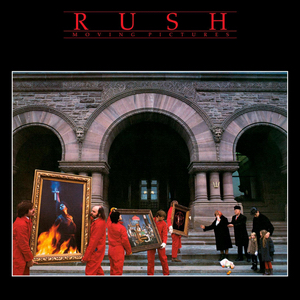
Moving Pictures (1981)

The watershed, both in critical and commercial terms, as Rush found themselves in the enviable position of reaching their widest audience with (arguably) their best album. Side One alone is the stuff of legend, its sequence of four tracks—"Tom Sawyer," "Red Barchetta," "YYZ," and "Limelight"—now all staples on classic-rock radio and cornerstones of every Rush concert since. And without the worry of overexposure, the second half might hold up even better now than it did in 1981, with the trio shifting from the space-age reggae of "Vital Signs" to the brooding "Witch Hunt" and, finally, "The Camera Eye," their glorious farewell to extended epics. (It would be the last Rush studio track to top ten minutes.) Other albums have their supporters, but practically every true fan agrees on Moving Pictures: a hands-down classic, and justifiably so.
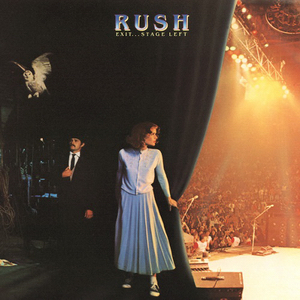
Exit... Stage Left (1981)

Even after the release of an additional half-dozen live platters, Exit... Stage Left remains the gold standard for Rush concert recordings, which only makes sense: how could a recording of one of the best live acts around playing songs from their best albums not be anything but astounding? As opposed to, say, Kiss Alive!, Exit... Stage Left didn't so much create Rush's reputation as solidify it, although one suspects countless new fans have still been converted over the years thanks to the playing of Side One—coupled with variations on the phrase, "These guys sound just like the record live." Plus, you can credit (or blame) Exit for now-standard crowd singalongs to "Closer To The Heart," not to mention the constant level of godlike worship cast in Neil Peart's general direction. His solo on "YYZ" remains the most famous percussion workout this side of "Moby Dick"; listen close, and you can almost hear an entire generation of drummers having their minds collectively blown.
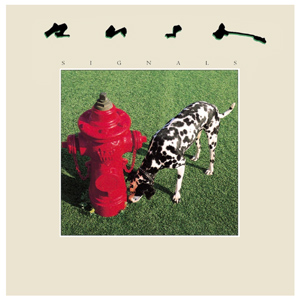
Signals (1982)

Following up Moving Pictures was bound to be an impossible task, and it's to the trio's credit that they made a conscious shift in direction rather than going for the easy sequel. Much maligned at the time, Signals holds up surprisingly well in hindsight, thanks to Rush now fully embracing the new-wave influence of bands like The Police—especially on the "Man" cuts ("Digital Man," "New World Man")—without abandoning any of their hard-won idiosyncrasies. Keyboards, while more prominent than ever, actually retain some genuine muscle in this context ("Subdivisions," "The Weapon"), and only the wet-balloon closer "Countdown" betrays any hint of the synthesized glop to follow on future albums. One dud aside, Signals is ever bit the equal of its more lauded Eighties brethren; perhaps more than any other title in the Rush canon, it's long overdue for reassessment.
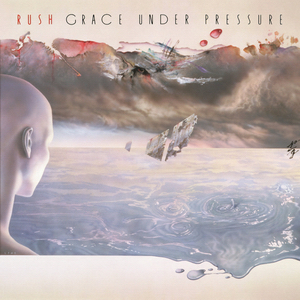
Grace Under Pressure (1984)

Not like any Rush release before or since, Grace Under Pressure polarizes. Some love the dark, dystopian flavor of Peart's lyrics (Nuclear war! Death! The Holocaust! And that's just the first three songs!), while others suffocate under the record's remorseless bent. Either way, the music of Grace suits the overriding theme perfectly—again, one might argue, perhaps too perfectly—for this is one chilly album, all icy keyboards and spiky guitars, with nary a hint of the band's earlier, analog warmth to be found. When it works, it works well ("Between The Wheels" and "The Body Electric" in particular), but it also locks Grace Under Pressure into a particular mid-Eighties moment, making it a unique entry in the Rush catalog—and an equally hard one to fully embrace.

Grace Under Pressure Tour 1984 (1985/2006)

Before the chronology complaints get too loud, a quick clarification: Grace Under Pressure Tour 1984 appeared on VHS and laserdisc in 1985, which puts its corresponding soundtrack in the same musical era—even though more than two decades elapsed before a proper release. (It's been available in a box set since 2006, and as a standalone CD since 2009.) For the diehards, Tour 1984 marks the only official live performance of the "Fear" trilogy in order, along with the earliest airing of "Vital Signs." For all others, this is a much better summation of Rush's "synth period" than the cruddy Show Of Hands, although the truncated setlist greatly dilutes its impact.

Power Windows (1985)

Here's where everything goes off the rails. Whereas Signals and Grace were taunt, muscular records despite the heavy influx of keyboards, Power Windows is simply bloated, with nearly every spark of magic over-produced and over-sequenced within an inch of its life. There are still a few solid numbers—"The Big Money," "Manhattan Project," and possibly "Marathon" before the choir kicks in—but even those have to fight through extra layers of studio polish just to resonate. Uniformity finally wins out on Side Two, which basically amounts to one very long, very synthetic song. Naturally, in the perverse spirit of the times, Power Windows became a big hit on rock radio and even MTV, meaning things would have to get worse before they got better...
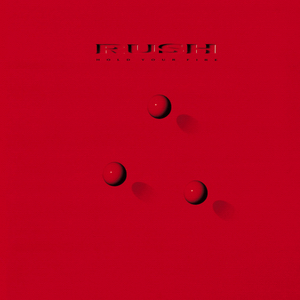
Hold Your Fire (1987)

Imagine a sequel to Power Windows, but with more synths and fewer decent songs. Small wonder Hold Your Fire now feels like Rush's lowest point since Caress Of Steel, minus that earlier record's youthful charm. "Time Stands Still," miraculously, emerges relatively unscathed; every other track points to a band running on Auto Pilot. The only upshot? Hold Your Fire would spur Rush towards a period of drastic reinvention, with a new label and sound within the span of two years.

A Show Of Hands (1989)

The Rush formula of "four studio records, then a live album" finally bit them on the ass with A Show Of Hands, easily the weakest of the trio's numerous concert recordings. This is what happens when you spotlight a tour in support of the worst Rush album in over a decade: Eight songs (of fourteen) from Power Windows and Hold Your Fire, two songs total that predate Signals, and one drum solo (of course). Oh yeah, and uniformly flat sound throughout. Rush currently has nine official live CDs available; do yourself a favor and get the other eight first.

No comments:
Post a Comment